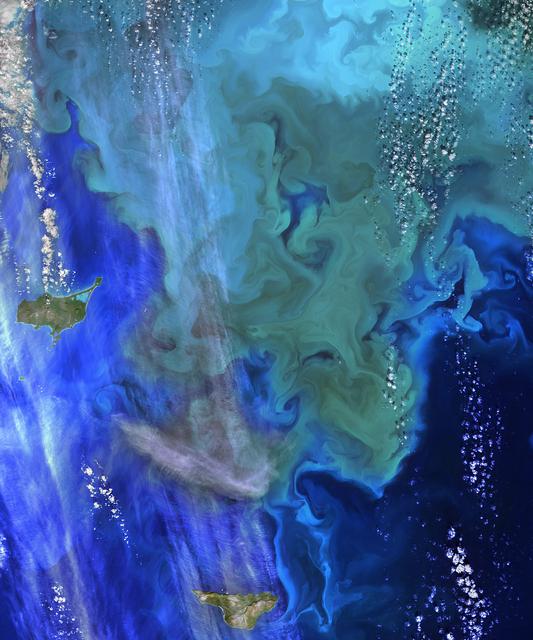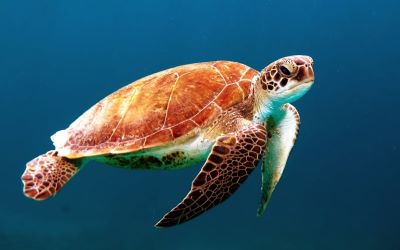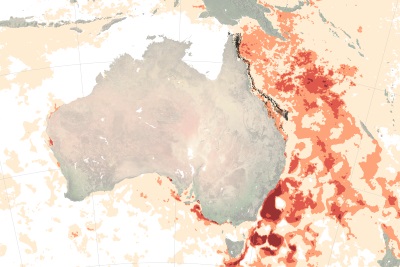Did you know that rocket science is not just about sending people to the moon, or Mars? And rocket science is not just for people who like to gaze up at the stars and wonder what else is out there.
The theme of National Science Week 2020 is Deep Blue: Innovations for the Future of our Oceans and like many people, you may be wondering what rocket science has to do with our oceans.
Rocket science is actually a vital part of science that can help us discover new things about our own life on earth. It can help us to have a better life through discoveries and scientific advancements.
What we’ve learned about our oceans thanks to rocket science
Heat stress contributing to coral bleaching on the Great Barrier Reef
Thanks to information from a range of satellites, Coral Reef Watch is able to measure sea surface temperature. Combined with aerial and sea observations, scientists can analyse the affect of ocean temperatures in coral bleaching events. The picture below shows a one week period in 2017, where Tan indicates a bleaching watch, meaning that the area may have been exposed to heat stress. Orange indicates a bleaching warning, meaning that bleaching is possible. Red indicates a bleaching alert level 1 (bleaching is likely), and dark red indicates alert level 2 (mortality is likely). Scientists use this information to determine the long term health of reef systems.
Turtle tracking using GPS and satellite technology
GPS technology, or global positioning systems, uses a network of more than 30 satellites in orbit around the earth to determine positions on earth. These satellites and GPS rely on rockets to launch the technology into a precise orbit around the earth.
The Queensland Department of Environment and Science has been running a loggerhead turtle research program for more than 40 years, using satellites to track the movements, migrations and breeding patterns of the turtles. You can read the stories of several ‘famous’ turtles that are part of the program here.
Phytoplankton – essential for our removing CO2
Phytoplankton are microscopic marine life, best observed from space, where large population ‘blooms’ can be seen. The coccolithophores phytoplankton, for example, calcite scales that appear white in satellite images. Phytoplankton are an essential food source for marine life and remove around 20% of the carbon dioxide from our atmosphere. Being able to observe increases or decreases in populations is essential to understanding climate change and the delicate balance of earth’s ecosystems. You might also find this video interesting, about a decrease in phytoplankton population levels between 1998 and 2012.

Coloring the Sea Around the Pribilof Islands. Image: NASA Goddard
These just touch the surface of the important research on our oceans thanks to satellites and rocket science. They offer a great perspective on what can be learned about the important ecosystems on earth.
To read about everyday inventions we have thanks to space travel, read this article.


